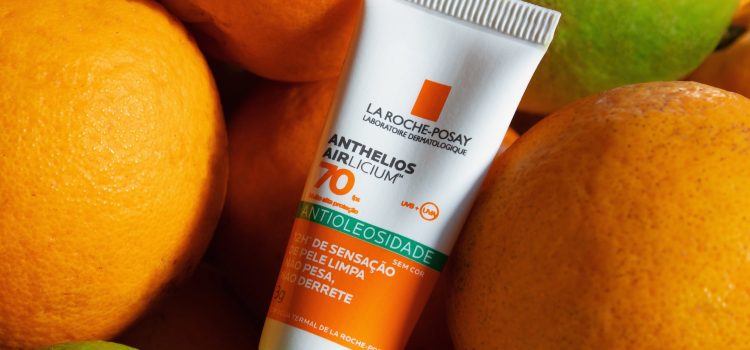
Skin cancer is one of the leading causes of death in the United States. With so many people exposed to the sun’s UV rays, it’s no wonder that more and more cases are being diagnosed each year. Fortunately, there are ways to protect your skin from the sun and reduce your risk of developing skin cancer. Wearing sunscreen is one of the most effective methods for doing this. In this guide, we will explore why sunscreen is so important, when you should wear it and what type of sunscreen to use for maximum protection. We’ll also give tips on how to properly apply sunscreen so that you can make sure your skin gets all the protection it needs.
What is sunscreen?
When it comes to protecting your skin from the sun, sunscreen is one of the most important things you can use. But what exactly is sunscreen?
Sunscreen is a lotion, spray, gel, or other product that you put on your skin to protect it from the sun’s ultraviolet (UV) rays. UV rays can cause sunburn, premature aging of the skin, and other skin problems.
Most sunscreens have chemicals that absorb UV rays. Some sunscreens also reflect UV rays away from the skin. There are also physical sunscreens that contain ingredients like zinc oxide and titanium dioxide that sit on top of the skin and block UV rays.
It’s important to choose a sunscreen that has an SPF of at least 30 and provides both UVA and UVB protection. You should also reapply sunscreen every two hours or more often if you’re sweating or swimming.
How does sunscreen work?
When you slather on sunscreen, you’re creating a physical barrier between your skin and the sun’s harmful ultraviolet (UV) rays. Some sunscreens work by reflecting the sun’s rays away from your body, while others absorb the UV radiation before it can reach your skin.
Both types of sunscreen rely on active ingredients to do their job. The most common active ingredient in chemical sunscreens is oxybenzone, which absorbs UV light. Other active ingredients include avobenzone, octisalate, octocrylene, homosalate, and octinoxate. Physical sunscreens usually contain titanium dioxide or zinc oxide, which sit on top of your skin and reflect the sun’s rays away from your body.
Most sunscreens are a combination of both physical and chemical ingredients. No matter what type of sunscreen you use, be sure to apply it generously and reapply it often for optimal protection.
The benefits of sunscreen
sunscreen provides many benefits to the skin. It helps to protect the skin from the sun’s harmful ultraviolet (UV) rays, which can cause sunburn, skin cancer, and other skin problems. Sunscreen also helps to prevent premature aging of the skin.
The dangers of not wearing sunscreen
Not wearing sunscreen can have some serious consequences. The most obvious one is an increased risk of skin cancer. But that’s not all. Sun exposure can also cause premature aging, wrinkles, and sun spots. And it doesn’t take long for the damage to be done. Just a few minutes of sun exposure every day can add up over time and lead to these problems.
So how can you protect yourself? The best way is to wear sunscreen every day, even when it’s cloudy or you don’t think you’ll be in the sun for very long. It’s also important to choose a sunscreen with an SPF of at least 30 and to reapply it every two hours or after swimming or sweating. By taking these simple steps, you can help keep your skin looking healthy and youthful for years to come.
How to apply sunscreen
sunscreen should be applied liberally to all exposed skin, including the face, neck, chest, back, and any other areas not covered by clothing.
For the best protection, sunscreen should be reapplied every 2 hours or after swimming or sweating.
When applying sunscreen, be sure to:
-Apply an even layer over the entire area you wish to protect
-Rub the sunscreen in until it is completely absorbed
-Avoid contact with eyes and mouth
-Reapply as needed
The best sunscreens for different skin types
The best sunscreens for different skin types:
If you have sensitive skin, look for a sunscreen that is hypoallergenic and non-comedogenic. You may also want to try a mineral sunscreen, which contains ingredients like zinc oxide or titanium dioxide.
For dry skin, choose a sunscreen that is oil-free and won’t clog pores. A hydrating sunscreen with added antioxidants can also help to nourish and protect your skin.
Oily skin types should look for an oil-free, non-comedogenic sunscreen. A mattifying formula can also help to control shine and keep pores clear.
If you have normal or combination skin, any type of sunscreen will work well for you. However, you may want to choose a formula with added antioxidants or anti-aging properties.
Conclusion
Wearing sunscreen regularly is essential for protecting your skin from the sun’s harmful rays. Whether you decide to go with a physical or chemical sunscreen, it’s important that you apply the appropriate SPF and reapply as needed throughout the day. Additionally, ensure that your body is well hydrated by drinking plenty of water while spending time in direct sunlight. Now that you have been armed with all this information, there’s no excuse not to slather on some sunscreen!










